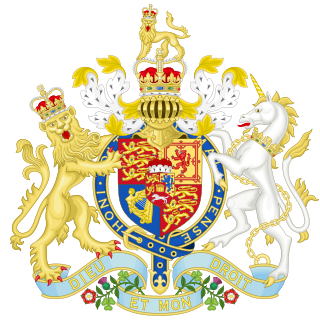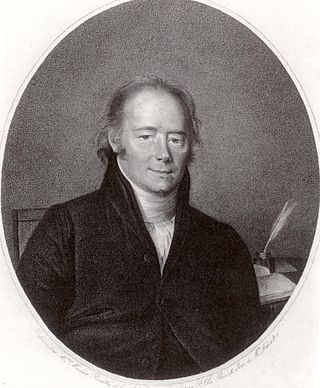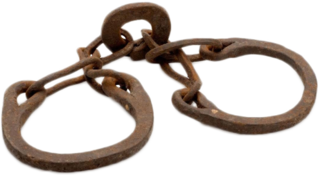Related Research Articles

James Stephen was the principal English lawyer associated with the movement for the abolition of slavery. Stephen was born in Poole, Dorset; the family home later being removed to Stoke Newington. He married twice and was the father of Sir James Stephen, grandfather of Sir James Fitzjames Stephen and Sir Leslie Stephen, and great-grandfather of Virginia Woolf and Vanessa Bell.

John Woolman was an American merchant, tailor, journalist, Quaker preacher, and early abolitionist during the colonial era. Based in Mount Holly, near Philadelphia, he traveled through the American frontier to preach Quaker beliefs, and advocate against slavery and the slave trade, cruelty to animals, economic injustices and oppression, and conscription. Beginning in 1755 with the outbreak of the French and Indian War, he urged tax resistance to deny support to the colonial military. In 1772, Woolman traveled to England, where he urged Quakers to support abolition of slavery.

Thomas Clarkson was an English abolitionist, and a leading campaigner against the slave trade in the British Empire. He helped found the Society for Effecting the Abolition of the Slave Trade and helped achieve passage of the Slave Trade Act 1807, which ended British trade in slaves.

The Slave Trade Act 1807, officially An Act for the Abolition of the Slave Trade, was an Act of the Parliament of the United Kingdom prohibiting the slave trade in the British Empire. Although it did not automatically emancipate those enslaved at the time, it encouraged British action to press other nation states to abolish their own slave trades. It took effect on 1 May 1807, after 18 years of trying to pass an abolition bill.

Olaudah Equiano, known for most of his life as Gustavus Vassa, was a writer and abolitionist. According to his memoir, he was from the village of Essaka in modern southern Nigeria. Enslaved as a child in West Africa, he was shipped to the Caribbean and sold to a Royal Navy officer. He was sold twice more before purchasing his freedom in 1766.

Anthony Benezet was a French-born American abolitionist and teacher who was active in Philadelphia, Pennsylvania. A prominent member of the abolitionist movement in North America, Benezet founded one of the world's first anti-slavery societies, the Society for the Relief of Free Negroes Unlawfully Held in Bondage. He also founded the first public school for girls in North America and the Negro School at Philadelphia, which operated into the nineteenth century. Benezet advocated for kind treatment of animals, racial equality and universal love.

The Zong massacre was a mass killing of more than 130 enslaved African people by the crew of the British slave ship Zong on and in the days following 29 November 1781. The William Gregson slave-trading syndicate, based in Liverpool, owned the ship as part of the Atlantic slave trade. As was common business practice, they had taken out insurance on the lives of the enslaved Africans as cargo. According to the crew, when the ship ran low on drinking water following navigational mistakes, the crew threw enslaved Africans overboard.

William Allen was an English scientist and philanthropist who opposed slavery and engaged in schemes of social and penal improvement in early 19th-century England.

Christian views on slavery are varied regionally, historically and spiritually. Slavery in various forms has been a part of the social environment for much of Christianity's history, spanning well over eighteen centuries. Saint Augustine described slavery as being against God's intention and resulting from sin. In the eighteenth century the abolition movement took shape among Christians across the globe.

Sir Thomas Fowell Buxton, 1st Baronet Buxton of Belfield and Runton, was an English Member of Parliament, brewer, abolitionist and social reformer. He married Hannah Gurney, whose sister became Elizabeth Fry, and became a great friend of her father Joseph Gurney and the extended Gurney family.

The Society for Effecting the Abolition of the Slave Trade, also known as the Society for the Abolition of the Slave Trade, and sometimes referred to as the Abolition Society or Anti-Slavery Society, was a British abolitionist group formed on 22 May 1787. The objective of abolishing the slave trade was achieved in 1807. The abolition of slavery in all British colonies followed in 1833.
The New York Manumission Society was founded in 1785. The term "manumission" is from the Latin meaning "a hand lets go," inferring the idea of freeing a slave. John Jay, first Chief Justice of the Supreme Court of the United States as well as statesman Alexander Hamilton and the lexicographer Noah Webster, along with many slave holders among its founders. Its mandate was to promote gradual emancipation and to advocate for those already emancipated. New York ended slavery in 1827. The Society was disbanded in 1849, after its mandate was perceived to have been fulfilled. the society battled against the slave trade, and for the eventual emancipation of all the slaves in the state. In 1787, they founded the African Free School to teach children of slaves and free people of color, preparing them for life as free citizens. The school produced leaders from within New York's Black community.

The Sons of Africa were a late-18th-century group in Britain that campaigned to end African chattel slavery. The "corresponding society" has been called the Britain's first black political organisation. Its members were educated Africans in London, including formerly enslaved men such as Ottobah Cugoano, Olaudah Equiano and other leading members of London's black community.

John Kimber was the captain of a British slave ship who was tried for murder in 1792, after the abolitionist William Wilberforce accused him of torturing to death an enslaved teenaged girl on the deck of his ship. Kimber was acquitted, but the trial gained much attention in the press. The case established that slave ships' crew could be tried for murder of slaves.

The Slave Trade Act 1788, also known as the Regulated Slave Trade Act 1788 or Dolben's Act, was an Act of Parliament that limited the number of enslaved people that British slave ships could transport, based on the ships' tons burthen (bm). It was the first British legislation enacted to regulate slave shipping.

In the United States, abolitionism, the movement that sought to end slavery in the country, was active from the colonial era until the American Civil War, the end of which brought about the abolition of American slavery, except as punishment for a crime, through the Thirteenth Amendment to the United States Constitution.

Abolitionism in the United Kingdom was the movement in the late 18th and early 19th centuries to end the practice of slavery, whether formal or informal, in the United Kingdom, the British Empire and the world, including ending the Atlantic slave trade. It was part of a wider abolitionism movement in Western Europe and the Americas.
Although many Enlightenment philosophers opposed slavery, it was Christian activists, attracted by strong religious elements, who initiated and organized an abolitionist movement. Throughout Europe and the United States, Christians, usually from "un-institutional" Christian faith movements, not directly connected with traditional state churches, or "non-conformist" believers within established churches, were to be found at the forefront of the abolitionist movements.
James Cropper (1773–1840) was an English businessman and philanthropist, known as an abolitionist who made a major contribution to the abolition of slavery throughout the British Empire in 1833.
David Cooper was an American farmer, Quaker, pamphleteer and an author of abolitionist ideals in the latter 1700s. A native of New Jersey, he lived the greater part of his life in and around Gloucester and Salem, New Jersey. Cooper was vocal on the issue of slavery and was devoted to the abolitionist movement before, during and after the American Revolution. A devout Quaker, he made numerous comparisons between abolition and Biblical thought in his writings, orations and orations. By submitting pamphlets and petitions, Cooper appealed to and encouraged George Washington and the Congress to make efforts to abolish slavery. He is noted for writing a 22-page anti-slavery tract addressed to the "Rulers of America", which was distributed to members of Congress, a copy of which Washington signed and kept in his personal library.
References
- 1 2 Saxton, Eveline B (1959). Transactions Of The Historic Society Of Lancashire And Cheshire (PDF). p. 179.
- ↑ "First Petition to Parliament". The Abolition Project. Retrieved 1 September 2019.
- ↑ Bona, Emilia (18 October 2018). "Anti-Slavery Day - Liverpool's shameful history - and why the city must never forget it". Liverpool Echo . Retrieved 1 September 2019.
- ↑ Williams, Gomer (2013). History of the Liverpool Privateers and Letter of Marque. Routledge. p. 578. ISBN 9781136906060.
- ↑ Clarkson, Thomas (1808). The History of the Abolition of the African Slave-Trade. Vol I. Chapter XVII.